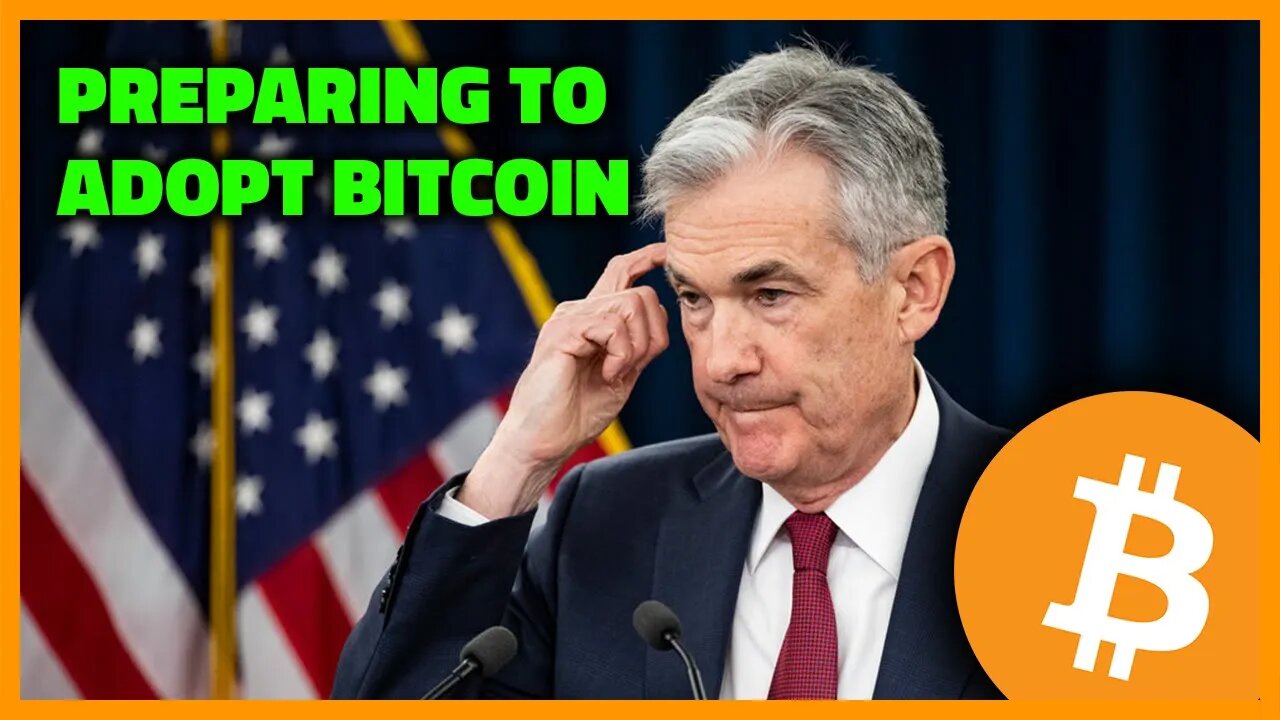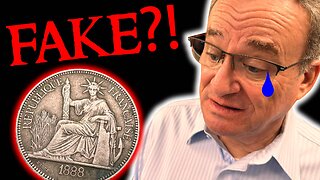Premium Only Content

A National Bitcoin Strategy w/ Matthew Pines - FED 88
In this episode of the Fed Watch podcast, CK and I had the privilege to chat with Matthew Pines from the Bitcoin Policy Institute. He recently wrote the fantastic and comprehensive Bitcoin essay for policymakers and the general public, Bitcoin and US National Security: An Assessment of Bitcoin as a Strategic Opportunity for the United States. Our conversation focused on a summary of the essay, digging deeper into quality vs quantity adoption, stablecoins, ways nations view CBDCs differently, and we end with talking about the Federal Reserve and their predicament right now over rate hikes with an inverted yield curve.
Fed Watch is a podcast for people interested in central bank current events and how Bitcoin will integrate or replace aspects of the aging financial system. To understand how bitcoin will become global money, we must first understand what’s happening now.
#Bitcoin #Fed #AnselLindner
We started out by discussing who was Matt’s target audience and did that affect the structure of the paper. I was curious because it is very comprehensive, covering bitcoin’s technical mechanics, recent monetary history, and then ways bitcoin could be used to the strategic advantage of the United States.
Matthew Pines responded that he anchored the structure of the paper around Biden’s recent executive order. As people are taking a closer look at these topics, and as they are writing reports themselves in response to that order, Matt wanted to give them an analytical primer and a summary of how bitcoin can address the concerns specifically of the administration about national security.
Next, we get into some specifics from the report. He mentions that 16% of US adults own bitcoin/cryptocurrency. However, this is an overall figure and doesn’t speak to the quality of that adoption. For instance, it could be a lot of gamblers buying scam tokens on Coinbase. I wondered if he had insight on adoption by the politically powerful, i.e. business leaders, government officials, influencers, millionaires and billionaires. In essence, I asked Matt to speculate based on his unique knowledge set.
Matt has a great line, “the power of selective high-value orange pilling can’t be overstated.” He says that is kind of what we all want, but it can turn out badly. He also warns against concentrating too much on politicians. In other words, let bitcoin’s incentives do the work.
Staying on the policy front for one more question, we ask if adoption is closing the window for possible devastatingly bad policy decisions. If 16% of the public own bitcoin now, how much will that be in 1 or 2 years? If 50% of people own bitcoin, and most of the politically influential class own bitcoin, does that make it nearly impossible to get bad policy? Once again, asking him to speculate on this question.
Matt’s answer is very constructive. He points out that the window of policy is moving in a positive direction, citing Senator Lummis’ recent work. He makes the distinction between the legislative and executive branches and says each have a different relationship to policy. The lawmakers are obvious, but an average employee of the executive branch could perpetuate misunderstanding because they are in a rush to write a brief or complete a report.
Now, we get into the CBDC discussion, focusing on Europe first. Matt claims that the European Union is inherently threatened by USD stablecoins and Bitcoin, because it is the monetary union that underpins the political union. Therefore, it is naturally more drawn to CBDC solutions.
He also agrees that the Federal Reserve is unlike the European Central Bank in terms of its pursuit of a CBDC. Basically, the Fed has a great grasp on the issues and forces at play in a CBDC. They are much more friendly to USD stablecoins than a CBDC already, even though they might not know all the strategic advantages that Matthew has outlined in his report.
One of Pines’ great points from his report, that he brings up at this point, is the ability for the Fed to regulate USD stablecoins and force them to be buyers of US Treasury Securities. This could add more demand for Treasuries and even give the Fed a new policy tool.
In the last part of the interview, we have time to quickly cover the Federal Reserve’s predicament. They have made a massive move to hawkishness, and after only one tiny hike, the yield curve is already inverting signaling recession. I asked Matt what he thought of this development, and what his take on the Fed’s options are at this point.
Matt goes on the expertly describe the situation in which the Fed finds itself as an “irreducibly complex system”. The Fed has to poke this complex system increasingly harder each time and wait to see what breaks. Matt says if we want to see where we are headed we should look to Japan, because they are 5 -10 years ahead of the rest of the world in these monetary experiments like QE and yield curve control.
That does it for this week. Thanks to the watchers and listeners.
-
 28:36
28:36
Bitcoin Magazine
5 days agoWhy Nation States Are Turning to Bitcoin w/ Prince Filip of Serbi, Karthik Iyer Jayaraman, Marwan
1.32K1 -
 DVR
DVR
WeAreChange
2 hours agoPSYOP Spreads: Drones Shut Down Airport In New York!
23.3K12 -
 1:31:18
1:31:18
Redacted News
5 hours agoEMERGENCY! NATO AND CIA ASSASSINATE TOP RUSSIAN GENERAL, PUTIN VOWS IMMEDIATE RETALIATION | Redacted
158K218 -
 56:45
56:45
VSiNLive
4 hours ago $4.12 earnedFollow the Money with Mitch Moss & Pauly Howard | Hour 1
40.6K2 -
 52:44
52:44
Candace Show Podcast
4 hours agoMy Conversation with Only Fans Model Lilly Phillips | Candace Ep 122
49.8K219 -
 UPCOMING
UPCOMING
tacetmort3m
4 hours ago🔴 LIVE - RELIC HUNTING CONTINUES - INDIANA JONES AND THE GREAT CIRCLE - PART 5
23.1K -
 26:52
26:52
Silver Dragons
3 hours agoCoin Appraisal GONE WRONG - Can I Finally Fool the Coin Experts?
17.2K2 -
 UPCOMING
UPCOMING
Bare Knuckle Fighting Championship
9 hours agoBKFC on DAZN HOLLYWOOD WARREN vs RICHMAN WEIGH IN
11.3K -

StoneMountain64
7 hours agoNew PISTOL meta is here?
23.8K1 -
 20:58
20:58
Goose Pimples
9 hours ago7 Ghost Videos SO SCARY You’ll Want a Priest on Speed Dial
12.5K3